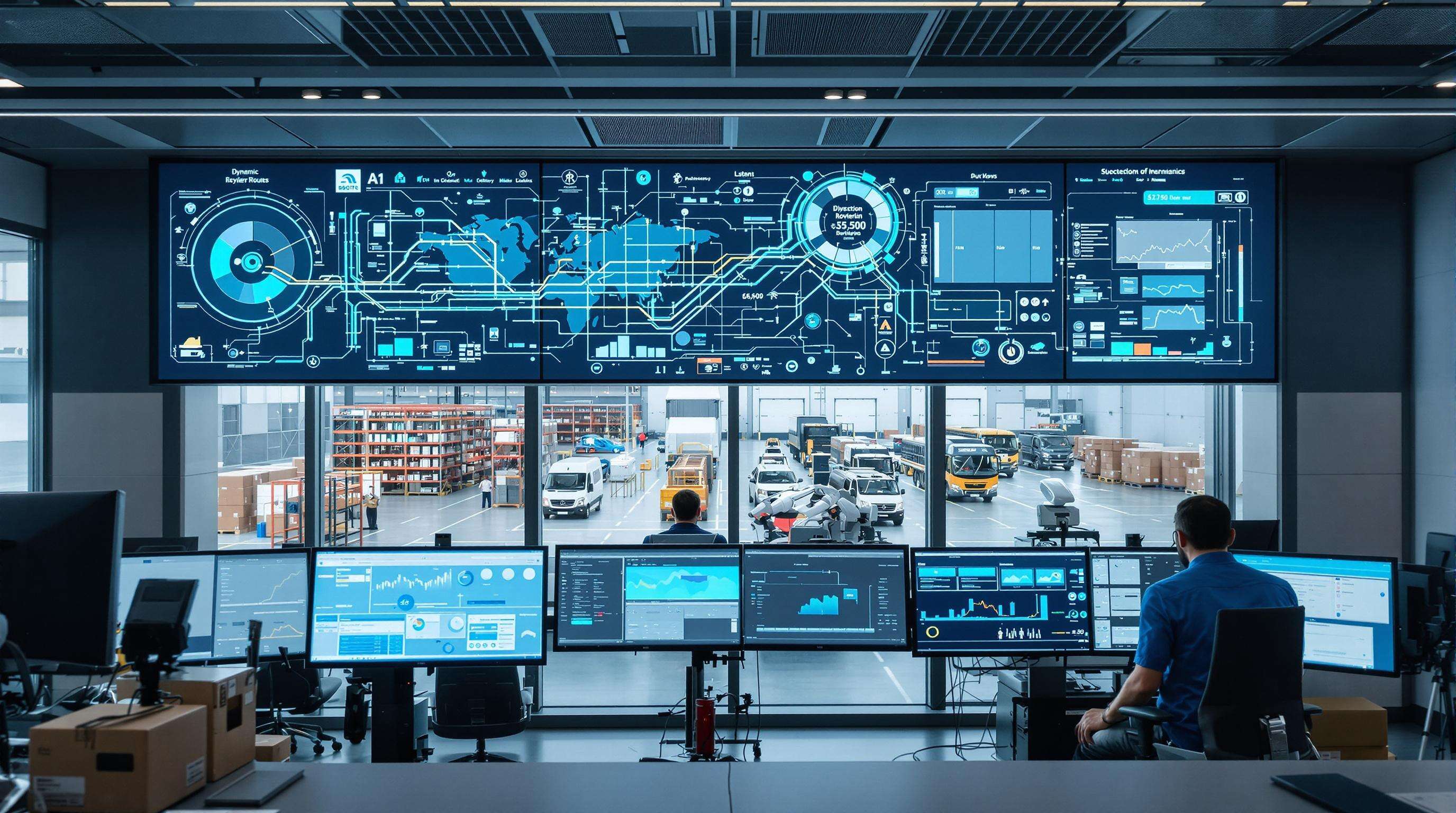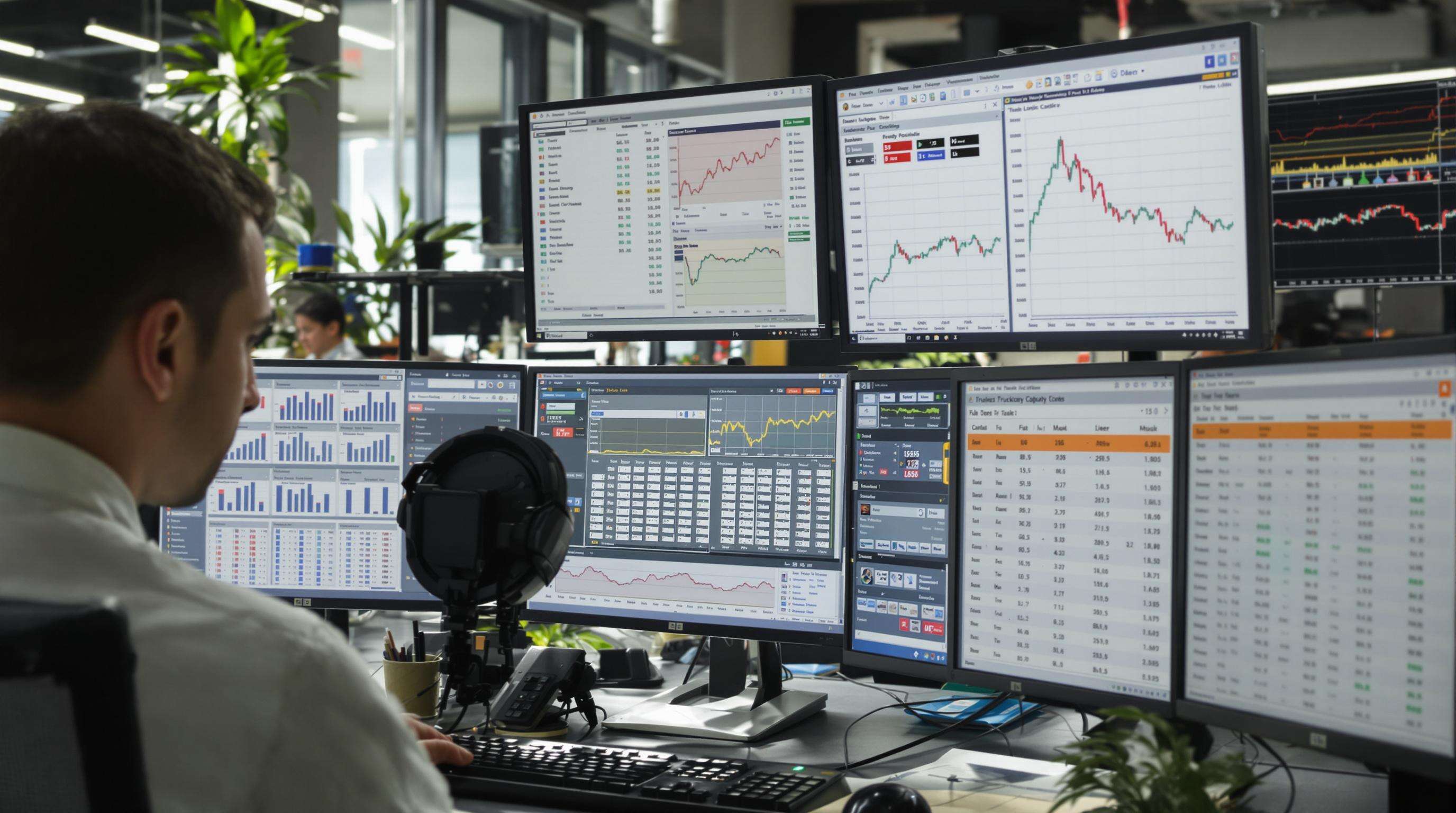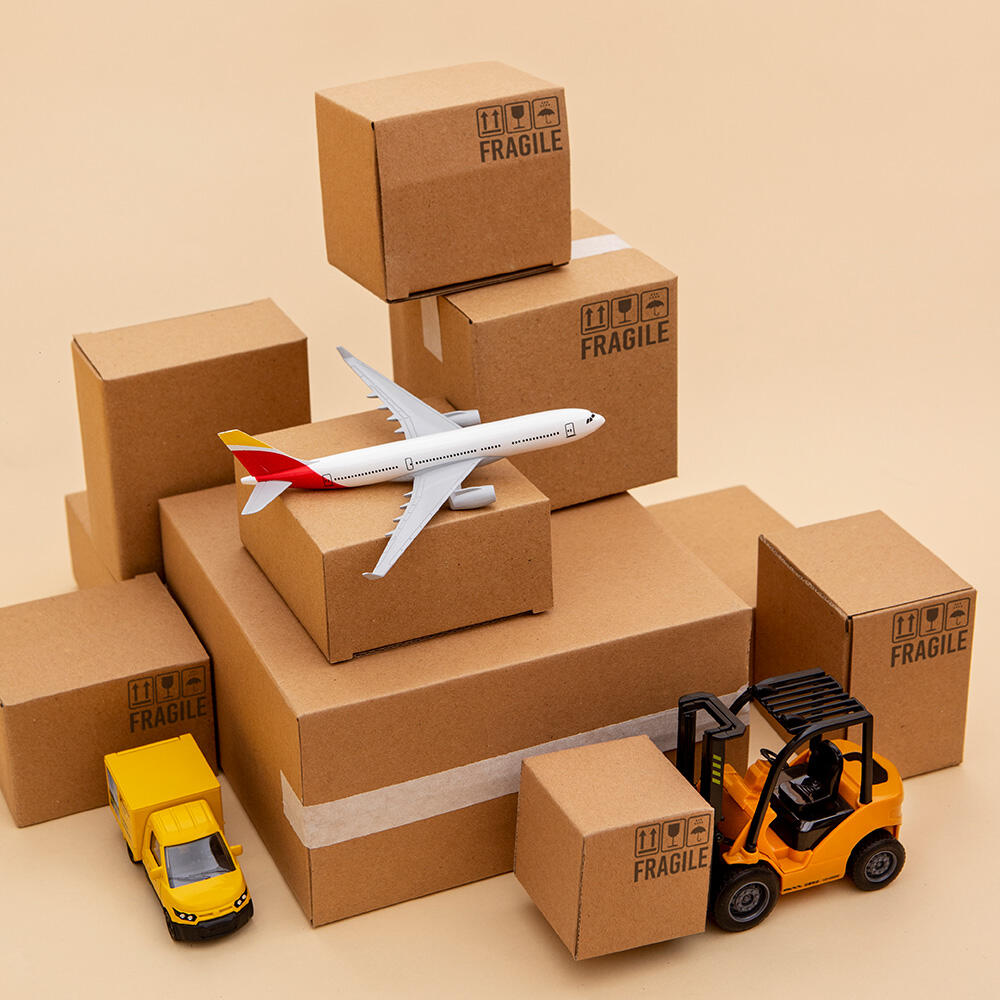Technology-Driven Transformation in North America Logistics

AI and Big Data for Demand Forecasting and Route Optimization
Logistics companies across North America are starting to use artificial intelligence tools that cut down on forecasting mistakes by around 38%, while also making delivery route planning happen right now rather than days ahead. These smart systems look at past sales numbers, weather patterns, even political events happening around the world to figure out what inventory will be needed next. According to a study from Ponemon back in 2023, they get this right about 92% of the time. Businesses that have adopted such technology see their inventory moving through warehouses faster too - about 15% improvement overall. And there's another benefit for trucking companies involved: those same businesses report seeing roughly 20% fewer instances where trucks drive without anything loaded. The 2025 data on how widely freight transport companies adopted these new methods supports these findings quite well.
Blockchain for Secure and Transparent Cross-Border Transactions
Blockchain is transforming U.S.-Canada-Mexico trade by resolving trust gaps through smart contracts that automate customs verification and payment execution. This has reduced border clearance times by 52% compared to legacy processes. A 2024 industry analysis found a 73% drop in document fraud for cross-border pharmaceutical shipments after blockchain implementation.
Warehouse Automation and Robotics in Last-Mile Delivery
In major US fulfillment centers today, AGVs along with parcel sorting robots handle around 64 percent of all order processing tasks. This has led to significant savings too - companies report roughly 30% lower labor expenses while maintaining an impressive 99.8% accuracy rate on orders. Looking at recent developments across North America's distribution hubs, we see something pretty remarkable happening. These advanced automation systems now allow same day delivery options for about 58% of people living in cities. The secret? Robotic mobile shelving technology that gets orders ready at speeds four times quicker compared to traditional methods. For retailers trying to keep up with fast paced consumer expectations, these numbers represent real game changers.
Digital Twins and Real-Time Supply Chain Visibility
Manufacturers who've adopted digital twin tech are seeing some pretty impressive results in their supply chains. One major company cut down on disruptions by about 40% after implementing these virtual replicas of their actual operations. The system works by pulling in data from all sorts of places across the logistics network. Sensors on delivery trucks, warehouse inventory systems, even port operations feed information into these models. What makes this so valuable is that it can spot potential breakdowns well before they happen sometimes as much as three days ahead of time. Companies that got started early with this approach typically need less safety stock sitting around in storage. Some have managed to reduce their emergency reserves by nearly a quarter while responding to crises almost 20% quicker when problems do arise. The ability to run different scenarios helps them prepare for whatever might go wrong next.
E-Commerce Expansion and Evolving Consumer Demands
Accelerated Delivery Expectations and Flexible Fulfillment Models
North American shoppers want their stuff fast these days, with around 68% expecting delivery within just 24 hours according to LinkedIn data from 2025. This has put real strain on logistics companies who need to keep up with both speed and flexibility demands. Many retailers are adapting by adopting what's called hybrid fulfillment models. About 43% have started using approaches like shipping directly from stores or offering BOPIS where customers buy online but pick up at physical locations. These strategies cut down those expensive last mile delivery costs by roughly 19%, all while giving shoppers more choices when it comes to getting their purchases.
Urban Logistics Innovation: Micro-Fulfillment Centers and Dark Stores
Cities like Toronto and Dallas are deploying micro-fulfillment centers in repurposed retail spaces and parking garages to position inventory within five miles of 90% of urban consumers. Dedicated e-commerce "dark stores" now handle 28% of metro-area deliveries, cutting average transit times to under two hours for priority shipments.
Omnichannel Integration and Inventory Synchronization
AI-driven platforms now synchronize inventory across 11.4 million square feet of warehouse space and 37,000 retail locations. Real-time visibility tools reduce overselling errors by 63% and allow dynamic rerouting during disruptions—essential as cross-channel sales grow 22% annually through 2025.
Building Resilient and Agile Supply Chains
Nearshoring and Reshoring Under USMCA to Reduce Risk
The USMCA trade agreement is accelerating regional supply chain shifts, with 68% of manufacturers launching nearshoring initiatives in 2024. By relocating production within North America, companies cut lead times by 12–18 days compared to Asia-Pacific sourcing (PwC 2024), while meeting "rules of origin" requirements for tariff benefits.
Diversified Sourcing and Multi-Node Distribution Networks
Leading providers are adopting hybrid sourcing models that combine domestic production with strategic international partners. This approach reduces supply chain vulnerability, as demonstrated below:
| Strategy | Risk Reduction | Cost Impact |
|---|---|---|
| Single-Source Reliance | 0% | -5% Short-Term |
| Multi-Node Networks | 47% | +8% Operational |
| Regional Hub System | 63% | +12% Capital |
Balancing Just-in-Time Efficiency with Strategic Safety Stock
While 72% of logistics operators maintain JIT practices for fast-moving SKUs, 58% have implemented dynamic buffer stocks for critical components since 2022. Advanced inventory optimization tools enable 22% lower carrying costs compared to traditional safety stock methods, proving resilience and efficiency can coexist (Supply Chain Resilience Study).
Infrastructure, Workforce, and Capacity Challenges in 2025
Freight Corridor Investments and Federal Infrastructure Initiatives
Our roads and rails are getting pretty old, and it's becoming a real problem. About 35 percent of US highways plus nearly half of our main freight rail lines need serious work just to keep up with what we'll be shipping by 2025. The big $1.2 trillion Infrastructure Investment and Jobs Act is supposed to fix this. They want to upgrade important routes such as the Texas Triangle area and those busy freight paths across the Midwest. These improvements should cut down on traffic jams that currently cost carriers around $94 every single hour they're stuck waiting (according to USDOT data from last year). Still there remains an issue though. State officials often don't coordinate well enough with private railroad companies. This lack of teamwork makes moving goods across borders much harder than it needs to be.
Driver Shortages and Labor Sustainability in Port and Long-Haul Operations
There's currently a big problem in the logistics industry with finding enough good commercial drivers. We're looking at around 15% fewer qualified people behind the wheel than needed, and things aren't getting better fast. The long haul trucking segment has seen driver turnover jump to 28%, plus many ports have older workers retiring soon. A recent report from 2025 shows that most transportation companies (about 62%) are working closely with vocational schools to get more people trained for CDL licenses. They're also starting to automate some of those tedious freight matching jobs which helps keep drivers on board longer. Interesting developments are happening at places like LA and Houston where new kinds of jobs are popping up. These positions mix traditional equipment operation with monitoring robotic systems, helping connect younger tech-savvy workers with older ones who know the ropes but need some modern upgrades to their skillset.
Freight Rate Volatility and Capacity Planning Outlook

Transport companies are increasingly adopting AI based transportation management systems as they deal with unpredictable shipping costs caused by rising diesel prices which jumped 23 percent year over year in the first quarter of 2025. Plus there are those tricky tariff changes under USMCA that keep things complicated. Top tier third party logistics providers note that about forty percent more businesses are locking in minimum shipping capacity through long term agreements these days. Still most companies keep around twelve to fifteen percent of their shipping needs open for last minute spot market deals during busy seasons when demand suddenly surges. This mix of contract commitments and flexible options actually works pretty well against unexpected problems with supply chain infrastructure or when industries like auto manufacturing or drug production experience sudden spikes in product demand.
Sustainability and the Shift to Green Logistics
Decarbonization Goals in U.S. and Canadian Logistics Markets
Regulators in both the United States and Canada have put in place strict emissions goals, which has led around two thirds of logistics companies across North America to start working on actual plans to cut down carbon emissions according to what the Paris Agreement outlined. The new trade agreement USMCA is helping push green energy into transport routes faster than before. We're seeing things like warehouses running on solar panels popping up along major highways, while some trucking companies are switching their fleets to run on biodiesel fuel instead of regular diesel. All these changes aren't just happening because of government rules either. More and more customers want to know where their packages come from and how clean the delivery process really is. Many people now choose shipping options based on whether a company can show proof they're actually reducing their environmental impact.
Electric Vehicle Fleet Adoption and Charging Infrastructure Gaps
Major logistics providers are investing in electric truck fleets, but charging infrastructure lags behind demand. Current stations meet only 40% of projected 2025 needs in key Midwest manufacturing regions, creating seasonal bottlenecks. Cold-weather performance remains a challenge, with battery efficiency dropping 25–35% in northern states during winter months.
Green Technology and Process Innovation for Sustainable Supply Chains
Smart companies are cutting down on energy use by around 19 to maybe even 24 percent when they use AI to plan routes that match up with when renewable energy sources are available. We've seen solar powered warehouses actually run about 35% cheaper than regular ones according to those recent reports on green shipping practices. What's really interesting is how these tech improvements let businesses track their carbon footprint in real time while moving goods through different transportation methods all across North America's complicated network of roads and rail lines. And none of this comes at the expense of dependable service either.
FAQ
What is a digital twin in the logistics industry?
A digital twin is a virtual model that replicates physical operations within a supply chain. It uses data from sensors and various systems to simulate real-time logistics processes, allowing companies to anticipate issues and optimize operations.
How does AI improve logistics forecasting?
AI tools analyze historical data and current conditions, like sales trends, weather, and political events, to predict future inventory needs with higher accuracy, leading to more efficient operations and reduced instances of empty truck runs.
What are micro-fulfillment centers?
Micro-fulfillment centers are small warehouses strategically located in urban areas to facilitate rapid delivery by housing inventory close to consumers, thereby reducing transit times and costs.
Table of Contents
- Technology-Driven Transformation in North America Logistics
- E-Commerce Expansion and Evolving Consumer Demands
- Building Resilient and Agile Supply Chains
- Infrastructure, Workforce, and Capacity Challenges in 2025
- Freight Corridor Investments and Federal Infrastructure Initiatives
- Driver Shortages and Labor Sustainability in Port and Long-Haul Operations
- Freight Rate Volatility and Capacity Planning Outlook
- Sustainability and the Shift to Green Logistics
- FAQ

